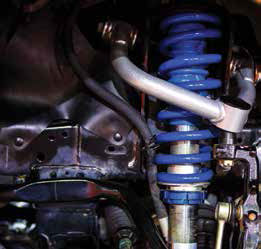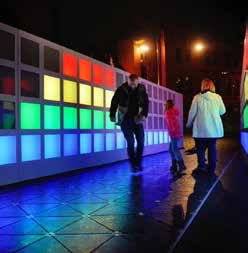 Recently, the company partnered with
search giant Google to develop the
largest ever single energy-harvesting
walkway at the Berlin Festival of Lights.
Recently, the company partnered with
search giant Google to develop the
largest ever single energy-harvesting
walkway at the Berlin Festival of Lights.Rising traffic congestion is a huge
problem all over the world, especially in
countries with large populations and an
increasing number of vehicle owners. In
these nations, engineers and infrastructure
developers face an enormous challenge
to cut down on gridlock and keep traffic
flowing smoothly.
One of the countries most affected by
congestion is China. According to the
Ministry of Public Security’s traffic bureau,
China boasted 300.3 million registered
vehicles at the end of March 2017 – up
from 194 million the previous year. Just
to put that into perspective, the last major
census conducted in the US revealed a
population of 324 million.
Developers and city planners have had
to become fairly creative to solve the traffic
problem. Self-driving cars have been
presented as one solution, but the silver
bullet (pretty much everywhere) seems
to be implementing more efficient and
affordable public transport systems.
Recently, Chinese company TEB came
up with the idea of creating a fleet of
buses that could drive over traffic stuck in
gridlock. These traffic-straddling buses, or ‘transit elevated buses’, would glide
on rails laid on either side of traffic lanes,
ensuring that public transport commuters
would never be late for work on account of
a traffic jam. Presented at the 19th China
Beijing International Hi-Tech Expo in 2016,
TEB’s goal was to transport up to 1 400
commuters for just 20% of the cost of an
underground transit system. Now that’s
some big thinking.
Unfortunately, the project had to be
scrapped due to the fact that the prototype
couldn’t navigate China’s current road
infrastructure, thanks to its narrow corners
and proliferation of foot bridges. Oops!
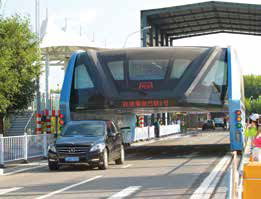
Macau Bridge
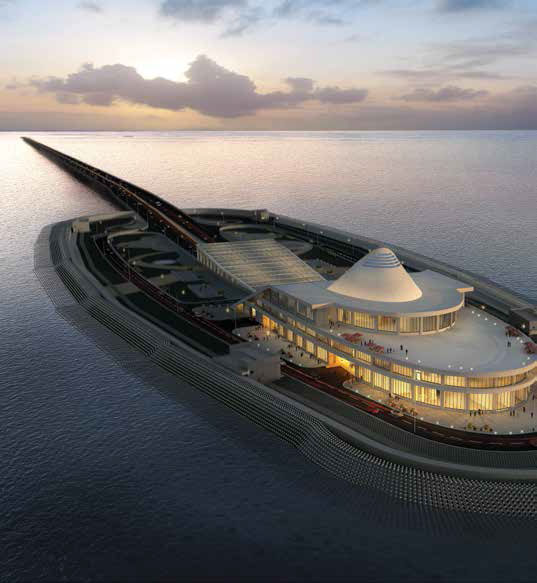
Sometimes thinking big may mean
considering the very small. Sea urchin
spines may prove to be the inspiration
behind the next generation of fractureresistant
cement, believe it or not.
Researchers at Germany’s University
of Konstanz, in collaboration with the
University of Stuttgart, carefully cut a
three-micrometer, bar-shaped structure
out of the nanostructured sea urchin
spines. This micro-structure was then
bent using a micro-manipulator. As soon
as it was released, the micro-structure
sprang back to its original position.
The researchers found that the
brick-wall-style architecture of the
calcite sea urchin spines enabled the
microstructure to resist pressures of up
to 200 megapascals, which is astounding
considering that calcite is commonly
accepted to be a brittle material. The
concrete commonly used today is
only able to resist 2-5 megapascals of
pressure.
These spines’ ability to withstand
such extreme pressures is due to their
architecture, which, when observed at the
nano-level, is comparable to the work of
a mason – with each layer of brick being held in place by mortar. The layers of
hard and soft material in such a wall give
the structure its strength; the layering
allows the transfer of any energy that hits
the wall to be absorbed by the soft layers,
reducing the risk of cracks forming on the
harder layers.
Theoretically, this means that columns
constructed using a synthesised sea
urchin spine concrete could reach heights
of 8 000m – 10 times higher than the
world’s tallest building! By comparison, a
steel column can only reach a height of
3 000m, because of its weight.
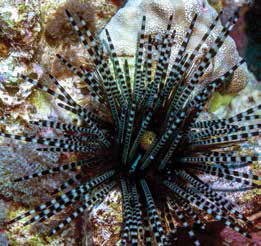
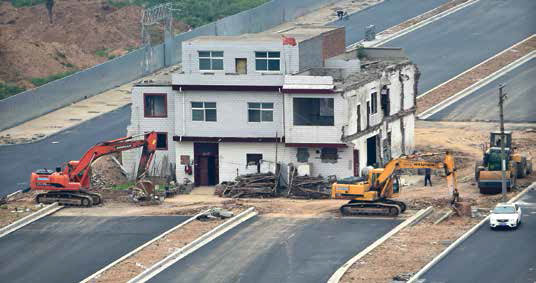
If you spend any amount of time commuting to work via a highway, you’ll know that the scenery leaves a lot to be desired. Aside from massive billboards proclaiming new and delicious fast food, there’s not much to see on a lengthy freeway drive. But in China, commuters are occasionally treated to some interestingly out-of-place architecture. There are a few roads that sport apartment buildings right in the middle! They’re called ‘nail houses’ – so named because they stick out of the landscape like nails that couldn’t be hammered down. These structures are left stranded on construction sites or surrounded by China’s steadily growing infrastructure. Nail houses are the highly visible result of owners and developers disagreeing about what constitutes fair compensation for their property. If a deadlock of this type seems unbreakable, developers simply excavate or build around these dwellings. China now boasts quite a few of these houses in its urban centres – and a few of them have even become tourist attractions. The nail house phenomenon, though extremely odd, shouldn’t be particularly surprising. According to a report in 2016 by the McKinsey Global Institute, China spends more on its growing infrastructure annually than both North America and Western Europe combined. The march of progress is apparently so relentless that a few determined homeowners and shopkeepers certainly won’t stand in its way. That said, the stubbornness of China’s property owners has led to some genuinely interesting results. Imagine passing a man mowing his lawn on a traffic island, or someone sunbathing in the middle of the highway on your way to work.
